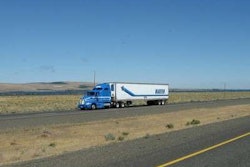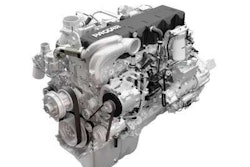Knight Transportation on Wednesday, Jan. 27, reported revenue and earnings for the fourth quarter and year ended Dec. 31, 2009.
For the quarter, revenue before fuel surcharge increased 0.2 percent to $143.9 million compared to $143.6 million. Total revenue decreased 4.0 percent to $167.8 million from $174.8 million due primarily to decreased fuel surcharge revenue. Net income decreased 18.6 percent to $13.1 million from $16.1 million.
For the year, revenue before fuel surcharge decreased 4.0 percent to $571.5 million from $595.6 million. Net income decreased 10.1 percent to $50.6 million from $56.3 million.
“Although significant improvement in miles per tractor is needed before rivaling the levels experienced a few years ago, we believe that our improvement in miles per tractor, especially without major reductions in our tractor count, is evidence that we are in the early stages of a turnaround in the truckload freight market,” said Kevin P. Knight, chairman and chief executive officer of the Phoenix-based company. “Nevertheless, residual consequences remain from the oversupply of capacity in 2006, combined with the subsequent economic slowdown, and continue to manifest themselves through the year-over-year decline in revenue per mile.
“We continue to be reminded of how challenging the current truckload environment is with the news of trucking company failures, despite having been in the seasonally stronger part of the year,” Knight said. “We expect the challenging truckload market to yield opportunities to continue to capture market share over time. We believe we are well positioned to navigate the challenges of the current environment and thrive as the market improves when truckload capacity decreases and/or freight demand modestly increases.”
Knight said the company has significant financial flexibility and a strong balance sheet, with $520.0 million of stockholders’ equity, $97.8 million in cash and short-term investments, and zero debt at Dec. 31, 2009. “We continue to operate a relatively young fleet of late-model equipment that consists primarily of tractors equipped with 2007 U.S. EPA emission-compliant engines,” he said. “Our service center network allows us to efficiently maintain this equipment. In 2010, we plan to continue a similar trade cycle and adopt the even cleaner burning engines which have just become available.”











